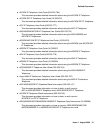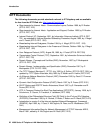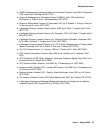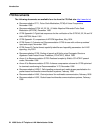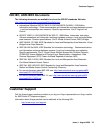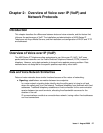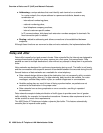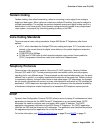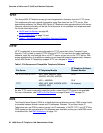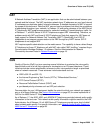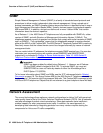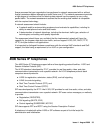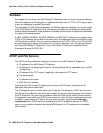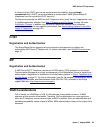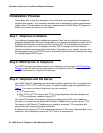
Overview of Voice over IP (VoIP)
Issue 4 August 2006 29
Tandem Coding
Tandem coding, also called transcoding, refers to converting a voice signal from analog to
digital and back again. When calls are routed over multiple IP facilities, they can be subject to
multiple transcodings. The multiple conversions between analog and digital coding result in a
deterioration in the voice quality. Avoid tandem coding wherever possible in any compressed
voice system, for example, by minimizing analog trunking on the PBX.
Voice Coding Standards
There are several voice coding standards. Avaya 4600 Series IP Telephones offer these
options:
● G.711, which describes the 64 kbps PCM voice coding technique. G.711-encoded voice is
already in the correct format for digital voice delivery in the public telephone network or
through PBXs.
● G.726 ADPCM at 32Kbps.
● G.729A and G.729B, both of which describe adaptive code-excited, linear-predictive
(CELP) compression that allows voice to be coded into 8 kbps streams.
Telephony Protocols
There are two major protocols used for Voice over IP (VoIP) signaling - Session Initiation
Protocol (SIP) and H.323. The two protocols provide connection control and call progress
signaling, but in very different ways. These protocols can be used simultaneously over the same
network, but in general, no endpoint supports both protocols at the same time. Neither protocol
is necessarily superior, but each offers some unique advantages. SIP telephones, for example,
do not require centralized call servers, and can route telephone calls when a URL identifies the
destination. H.323 telephones leverage the call server’s presence into the potential availability
of hundreds of telephone-related features that a standalone SIP telephone cannot provide.
DHCP
Dynamic Host Configuration Protocol (DHCP) allows a server to assign IP addresses and other
parameters to devices like the 4600 Series IP Telephones on an as-needed basis. DHCP
eliminates the need to configure each end station with a static IP address. The DHCP
application also passes information to the 4600 Series IP Telephone. The DHCP application
identifies the PBX and the file server’s IP addresses. The application also identifies the paths to
the upgrade script and the application file on the file server.
For further information, see DHCP and File Servers
on page 59 and DHCP on page 61.



